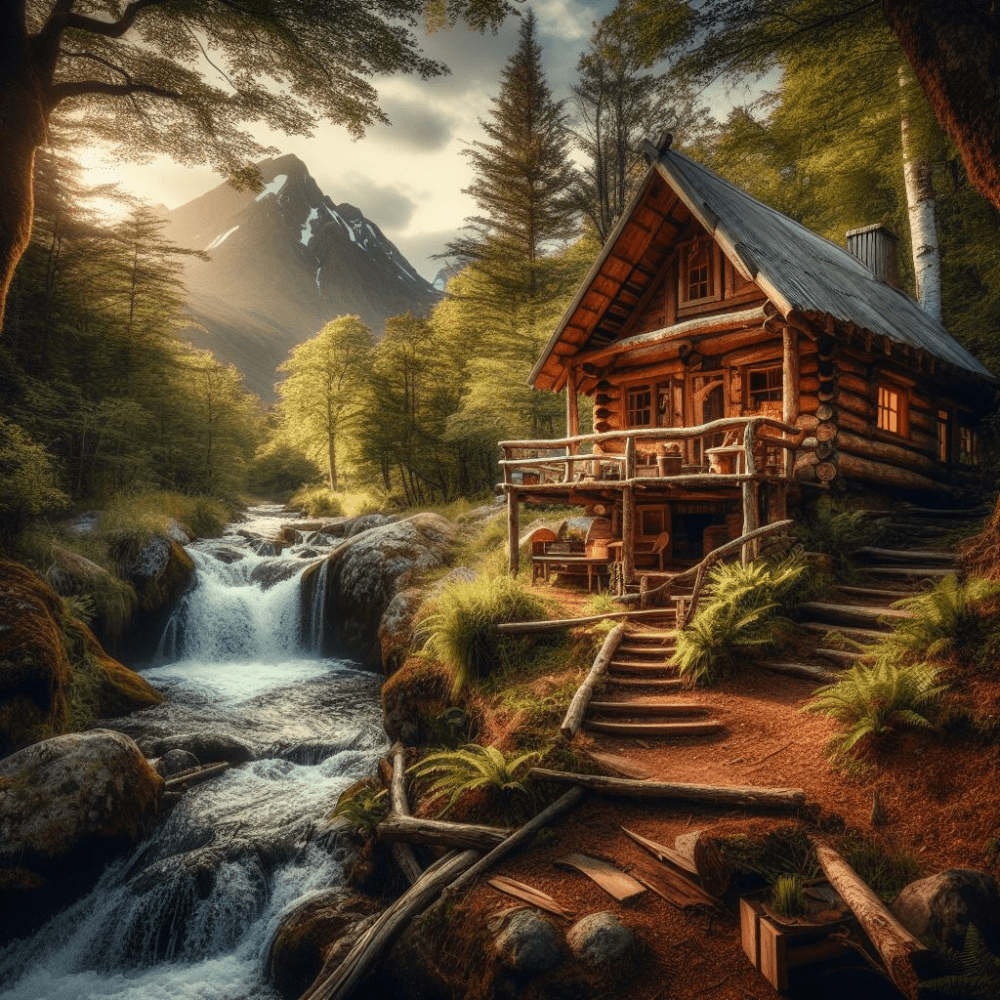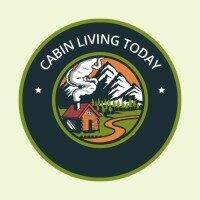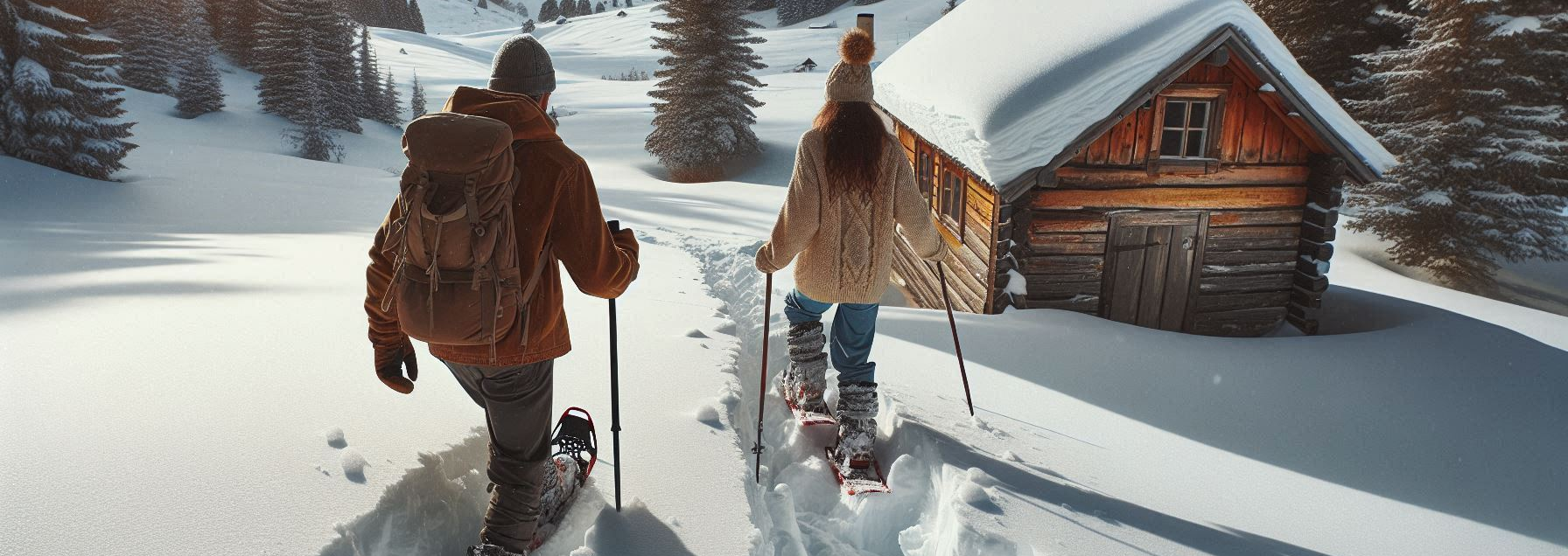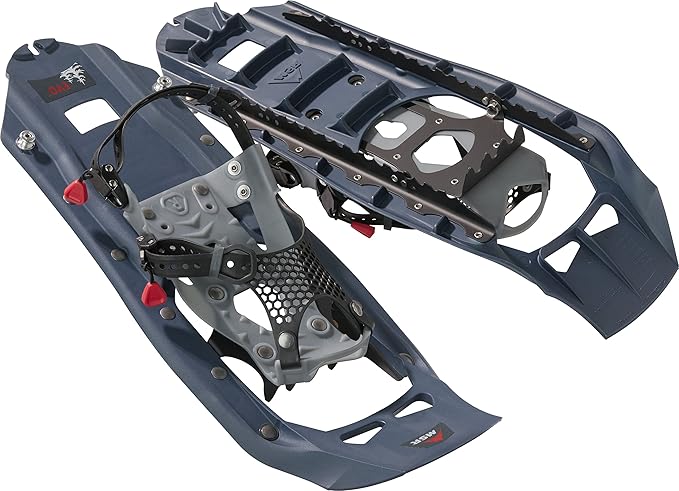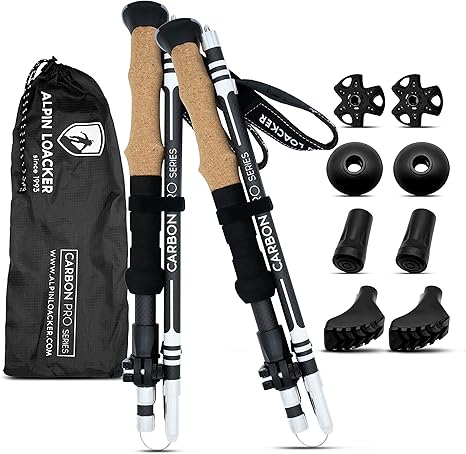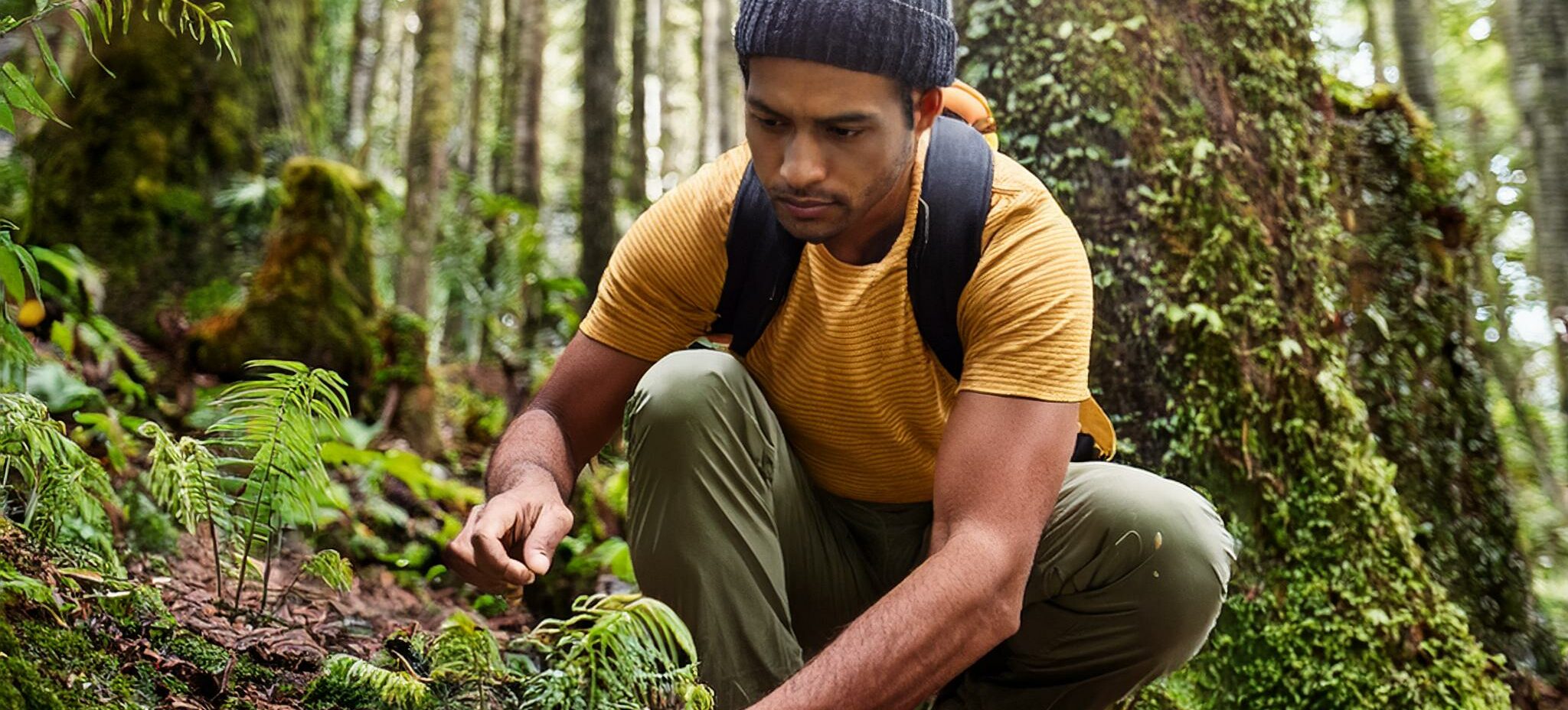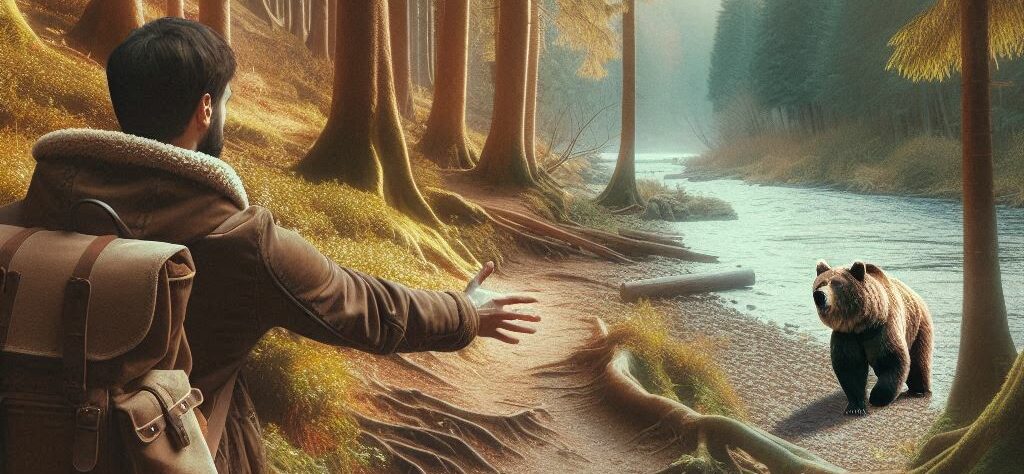Snowshoeing can be a blast, but only if you’ve got the right gear on your side. The key here isn’t just about looking cool, it’s about staying warm, dry, and safe out there. Trust me, you’ll thank yourself later.
Picking the right snowshoes is your first step. There are different types for different adventures. Recreational snowshoes are perfect for those easy, flat trails, while backcountry snowshoes are your go-to for more rugged terrain with plenty of deep powder. Make sure you pick the ones that match your adventure plans.
(Just a quick side note. When I first started snow shoeing I chose a cheap brand on sale at one of our local stores. To make a long store short, I barely made it back to my truck because they fell apart on me. The last thing you want if you are treading through deep snow is for your snow shoe to break. Pay a little more and you will never regret it.)
Next up: clothing. Layering is a must in snowy conditions. Start with a moisture-wicking base layer to keep sweat away from your skin. Add an insulating layer like fleece to keep the warmth in, and top it off with a waterproof, breathable outer shell to keep the elements out. And don’t forget a beanie and gloves – keeping your extremities warm is crucial.
Footwear is another biggie. Waterproof, insulated boots will keep your feet toasty and dry. The last thing you want is soggy socks halfway through your trek. Trust me on this one.
Safety isn’t something to skimp on. Carry an avalanche beacon if you’re heading into risky areas, and always have trekking poles to help with stability and balance. An emergency kit with items like a thermal blanket, extra food, and a first aid kit can be a lifesaver (literally).
Finally, think about your backpack. It should be sturdy and waterproof, with enough room for your water, snacks, extra layers, and safety gear. A snug fit is important, so look for adjustable straps and a waist belt to distribute weight evenly.
Remember, the right gear makes or breaks your snowshoeing experience. Get it right, and you’ll be all set for an epic adventure.
Planning Your Snowshoeing Route
Mapping out your snowshoeing route isn’t just about getting from Point A to Point B; it’s about ensuring an adventure that’s both fun and safe. Knowing your trail and preparing well can make all the difference.
First, research and select trails that suit your skill level. Beginners should look for well-groomed, marked trails with minimal elevation gain. More advanced trekkers might explore the backcountry, but remember – the more challenging the trail, the more preparation it requires.
Trail markers and understanding signage are crucial. Pay attention to them to avoid getting lost. Familiarize yourself with the different signs and what they mean. Many trails will have maps at the trailhead; don’t just glance at them, take a picture for reference.
Having a good sense of direction is essential. Bring along a map and a compass or GPS device. Trail apps can also be handy, providing real-time location tracking and helpful information. Trust me, a dead phone isn’t much help when you’re miles deep into the forest.
Checking the weather forecast is non-negotiable. Snow conditions can change quickly, and you’ll want to avoid getting caught in a sudden storm. Pack accordingly based on the forecast and always prepare for the unexpected.
Another tip: inform someone about your plans. Share your route and expected return time with a friend or family member. It’s a safety net if things don’t go as planned.
By planning your route with these steps, you set yourself up for a smooth, enjoyable snowshoeing trip. Being prepared means you can focus on soaking in the beauty of the winter landscape – not worrying about what’s around the next corner.
Staying Safe and Healthy on Your Adventure
When you’re miles away from the warmth of your cabin, staying safe and healthy takes top priority. You don’t want a fun excursion to turn into a survival story.
Getting your body used to the cold is crucial. Spend time outside in the cold weather leading up to your trip so your body can acclimatize. This makes it easier to handle the cold temperatures without freezing up.
Hydration and nutrition are your best friends out there. Your body burns more calories in the cold just to keep warm, so pack high-energy snacks like nuts, dried fruit, and energy bars. And don’t sleep on hydration – it’s easy to forget about drinking water when it’s cold, but your body needs it just as much, if not more.
First aid essentials should always be in your pack. This includes bandages, antiseptics, and medications for common issues like headaches or allergies. Knowing basic first aid techniques for treating frostbite and hypothermia can be a game-changer.
Wildlife is a part of the snowshoeing landscape. Be aware of your surroundings and know what animals inhabit the area. Respect nature by keeping a safe distance from any wildlife. Remember, you’re a guest in their habitat.
By taking these steps to stay safe and healthy, you can ensure your snowshoeing adventure remains a positive, memorable experience.
Maximizing the Enjoyment of Your Snowshoeing Experience
It’s not just about the trek but the experience itself. Making the most out of your snowshoeing adventure involves a few extra steps to truly savor the moment.
Capture the beauty around you. Snow-covered landscapes offer incredible photography opportunities. If you’re bringing a camera or using your phone, keep your batteries warm in a pocket close to your body to prevent them from draining too quickly.
Mindfulness can enhance your journey. Pay attention to the crunch of snow underfoot, the crispness of the air, and the tranquility of the snowy woods. This connection with nature can be incredibly rejuvenating.
Mixing in some fun activities can make your outing even more enjoyable. Building a snow shelter or spotting and identifying animal tracks can be fun and educational.
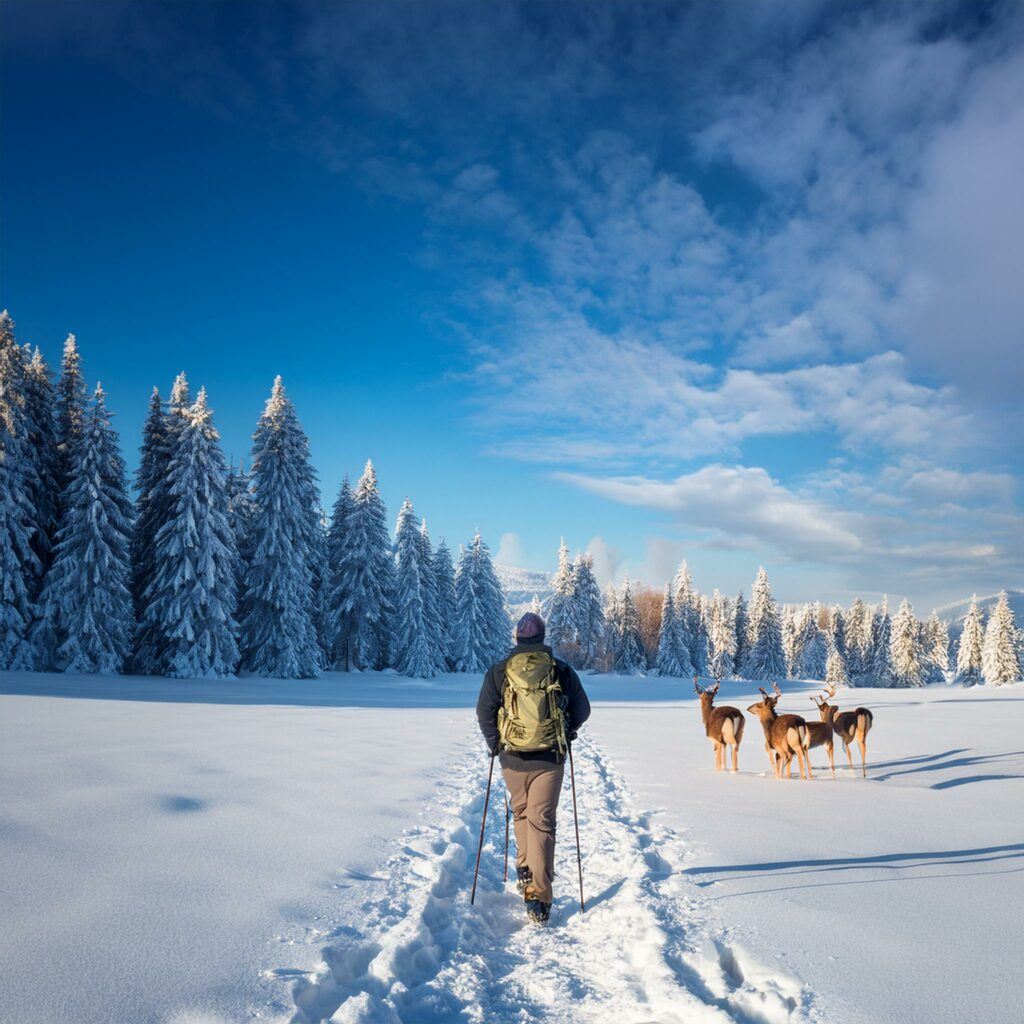
Lastly, respecting the environment ensures it remains pristine for future adventures. Follow the leave-no-trace principles to avoid disrupting the natural beauty. This means packing out all your trash, sticking to trails, and minimizing your impact.
